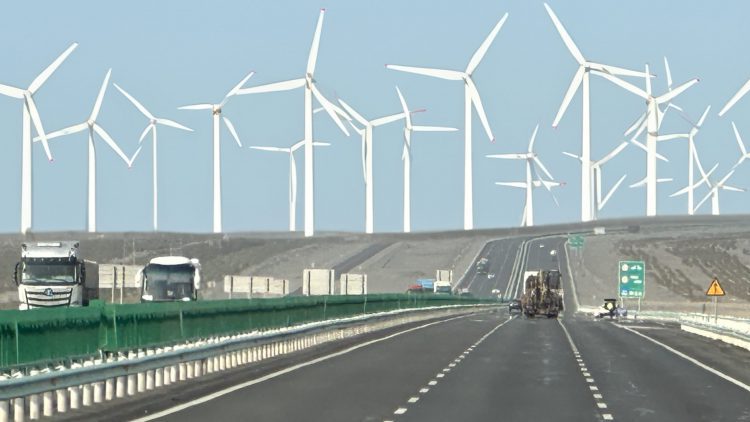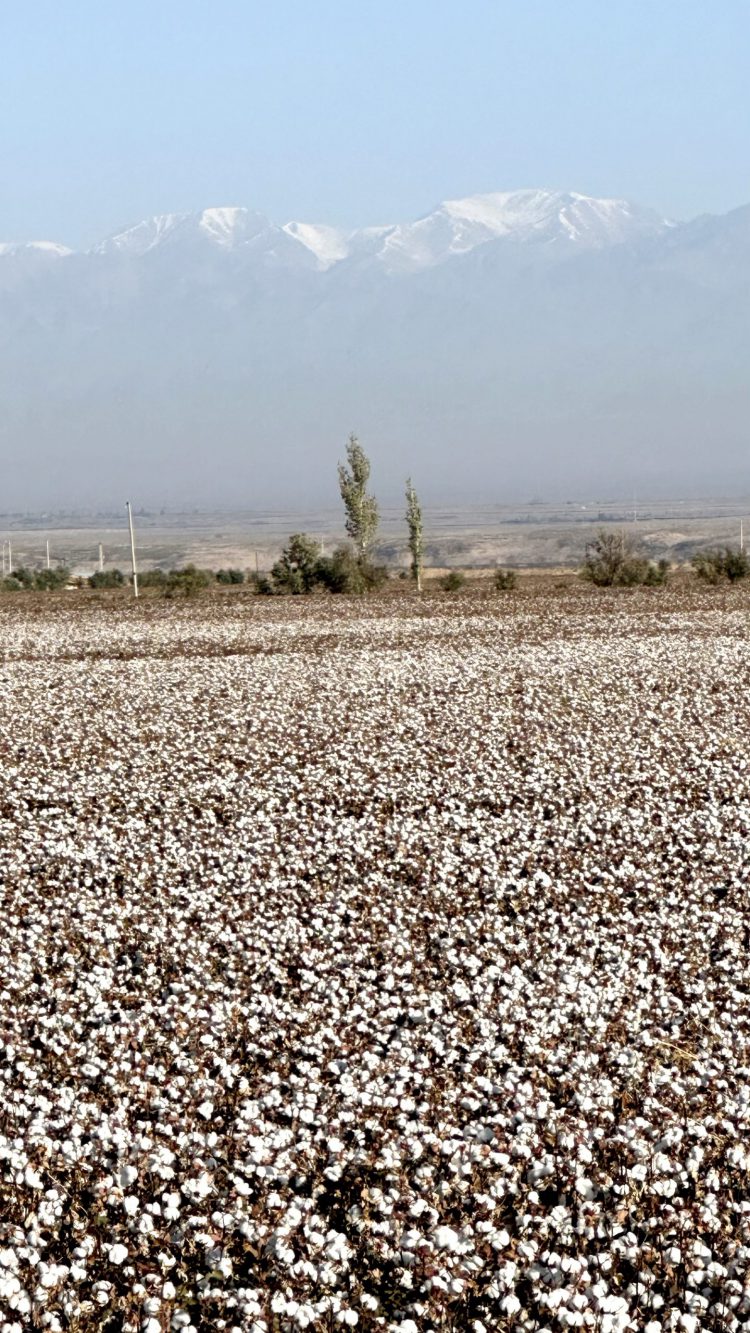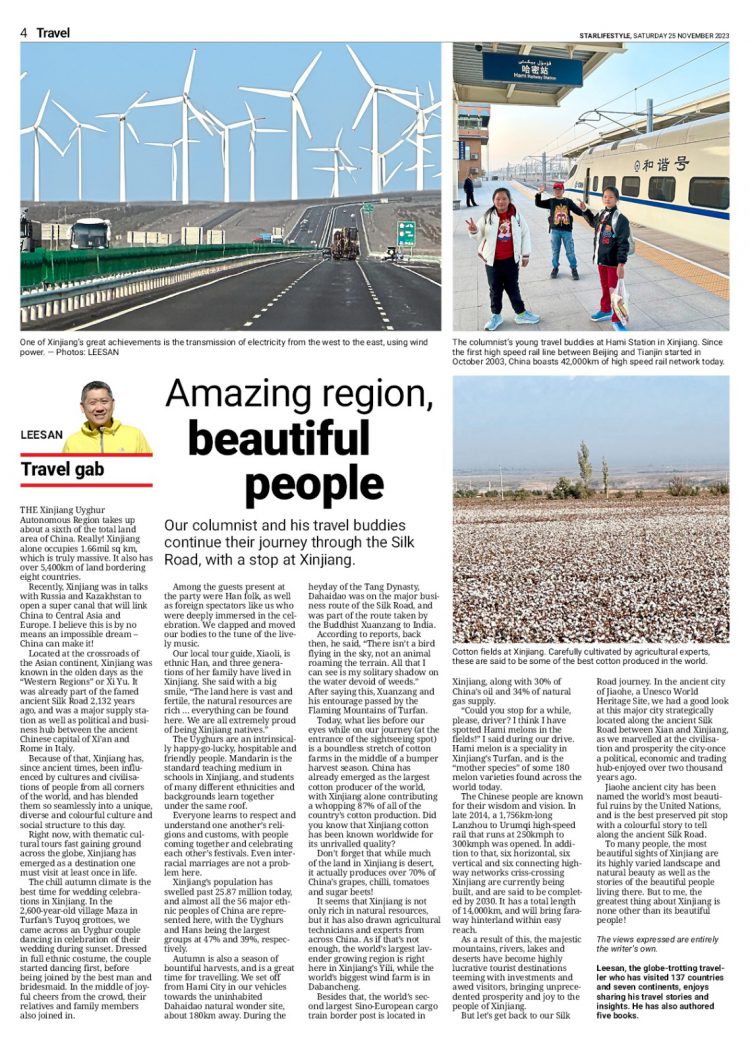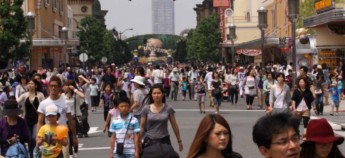Amazing region, beautiful people – by leesan
Our columnist and his travel buddies continue their journey through the Silk Road, with a stop at Xinjiang.

One of Xinjiang’s great achievements is the transmission of electricity from the west to the east, using wind power. – Photos: LEESAN
THE Xinjiang Uyghur Autonomous Region takes up about a sixth of the total land area of China. Really! Xinjiang alone occupies 1.66mil sq km, which is truly massive. It also has over 5,400km of land bordering eight countries.
Recently, Xinjiang was in talks with Russia and Kazakhstan to open a super canal that will link China to Central Asia and Europe. I believe this is by no means an impossible dream – China can make it!
Located at the crossroads of the Asian continent, Xinjiang was known in the olden days as the “Western Regions” or Xi Yu. It was already part of the famed ancient Silk Road 2,132 years ago, and was a major supply station as well as political and business hub between the ancient Chinese capital of Xi’an and Rome in Italy.
Because of that, Xinjiang has, since ancient times, been influenced by cultures and civilisations of people from all corners of the world, and has blended them so seamlessly into a unique, diverse and colourful culture and social structure to this day.
Right now, with thematic cultural tours fast gaining ground across the globe, Xinjiang has emerged as a destination one must visit at least once in life.
The chill autumn climate is the best time for wedding celebrations in Xinjiang. In the 2,600-year-old village Maza in Turfan’s Tuyoq grottoes, we came across an Uyghur couple dancing in celebration of their wedding during sunset. Dressed in full ethnic costume, the couple started dancing first, before being joined by the best man and bridesmaid. In the middle of joyful cheers from the crowd, their relatives and family members also joined in.

The columnist’s young travel buddies at Hami Statioin in Xinjiang. Since the first high speed rail line between Beijing and Tianjin started in October 2003, China boasts 42,000km of high speed rail network today.

Cotton fields at Xinjiang. Carefully cultivate by agricultural experts, these are said to be some of the best cotton produced in the world.
Among the guests present at the party were Han folk, as well as foreign spectators like us who were deeply immersed in the celebration. We clapped and moved our bodies to the tune of the lively music.
Our local tour guide, Xiaoli, is ethnic Han, and three generations of her family have lived in Xinjiang. She said with a big smile, “The land here is vast and fertile, the natural resources are rich … everything can be found here. We are all extremely proud of being Xinjiang natives.”
The Uyghurs are an intrinsically happy-go-lucky, hospitable and friendly people. Mandarin is the standard teaching medium in schools in Xinjiang, and students of many different ethnicities and backgrounds learn together under the same roof.
Everyone learns to respect and understand one another’s religions and customs, with people coming together and celebrating each other’s festivals. Even interracial marriages are not a problem here.
Xinjiang’s population has swelled past 25.87 million today, and almost all the 56 major ethnic peoples of China are repre- sented here, with the Uyghurs and Hans being the largest groups at 47% and 39%, respectively.
Autumn is also a season of bountiful harvests, and is a great time for travelling. We set off from Hami City in our vehicles towards the uninhabited Dahaidao natural wonder site, about 180km away. During the heyday of the Tang Dynasty, Dahaidao was on the major business route of the Silk Road, and was part of the route taken by the Buddhist Xuanzang to India.
According to reports, back then, he said, “There isn’t a bird flying in the sky, not an animal roaming the terrain. All that I can see is my solitary shadow on the water devoid of weeds.” After saying this, Xuanzang and his entourage passed by the Flaming Mountains of Turfan.
Today, what lies before our eyes while on our journey (at the entrance of the sightseeing spot) is a boundless stretch of cotton farms in the middle of a bumper harvest season. China has already emerged as the largest cotton producer of the world, with Xinjiang alone contributing a whopping 87% of all of the country’s cotton production. Did you know that Xinjiang cotton has been known worldwide for its unrivalled quality?
Don’t forget that while much of the land in Xinjiang is desert, it actually produces over 70% of China’s grapes, chilli, tomatoes and sugar beets!
It seems that Xinjiang is not only rich in natural resources, but it has also drawn agricultural technicians and experts from across China. As if that’s not enough, the world’s largest lavender growing region is right here in Xinjiang’s Yili, while the world’s biggest wind farm is in Dabancheng.
Besides that, the world’s second largest Sino-European cargo train border post is located in Xinjiang, along with 30% of China’s oil and 34% of natural gas supply.
“Could you stop for a while, please, driver? I think I have spotted Hami melons in the fields!” I said during our drive. Hami melon is a speciality in Xinjiang’s Turfan, and is the “mother species” of some 180 melon varieties found across the world today.
The Chinese people are known for their wisdom and vision. In late 2014, a 1,756km-long Lanzhou to Urumqi high-speed rail that runs at 250kmph to 300kmph was opened. In addition to that, six horizontal, six vertical and six connecting highway networks crisscrossing Xinjiang are currently being built, and are said to be completed by 2030. It has a total length of 14,000km, and will bring faraway hinterland within easy reach.
As a result of this, the majestic mountains, rivers, lakes and deserts have become highly lucrative tourist destinations teeming with investments and awed visitors, bringing unprecedented prosperity and joy to the people of Xinjiang.
But let’s get back to our Silk Road journey. In the ancient city of Jiaohe, a Unesco World Heritage Site, we had a good look at this major city strategically located along the ancient Silk Road between Xian and Xinjiang, as we marvelled at the civilisation and prosperity the city-once a political, economic and trading hub-enjoyed over two thousand years ago.
Jiaohe ancient city has been named the world’s most beautiful ruins by the United Nations, and is the best preserved pit stop with a colourful story to tell along the ancient Silk Road.
To many people, the most beautiful sights of Xinjiang are its highly varied landscape and natural beauty as well as the stories of the beautiful people living there. But to me, the greatest thing about Xinjiang is none other than its beautiful people!
Leesan, the globe-trotting traveller who has visited 137 countries and seven continents, enjoys sharing his travel stories and insights. He has also authored five books.

Published in STAR 2, 25 November 2023
全球超过80000家酒店,Apple101助您轻松订房,出行无忧,绝对优惠价。入住期间付款,多数客房可免费取消!











